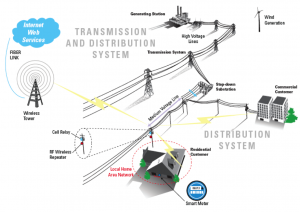As we wade even deeper into the digital economy, workload automation has become more of a necessity and less of an amenity. Customers and clients expect you to be able to produce results in real time, and a more robust BPM (business process management) automation tool can get you there. Gone are the days when BPM tools were simply helpful, now they are essential for every industry.
Banking: Your customers need to manage their accounts online and receive accurate information about their finances.
Utilities: Predicting and preventing blackouts will keep your customers satisfied and detecting meter fraud will boost your bottom line.
Sales: Monitor and adjust custom-designed analytics that help you target the right audience with the right message.
IT management: Automate data-intensive or computing-intensive processes to boost the efficiency and accuracy of your IT department.
Internal workflow: Bridge the gap between business and IT with workflow that moves more fluidly between employees and departments.
A more robust BPM tool will help you align business processes more effectively with your customer expectations. If your company is struggling to keep up with customer demands and adapt to changing technology, BPM could help your business grow.
When is it time to consider using a more robust BPM automation tool?
- Multiple User Access: Does your business process span departments and route to various user roles? Are there multiple types of user authority? Are there multiple ways (fax, email, mobile app, etc.) to trigger the process? Do you need to allow for multiple types of user access (view, update, admin)? How many users will require access?
- Integration: Is there a need for integration with other applications? Does the process need to access or update multiple data sources? How and where is the data captured and stored? How much data and in what form is data being passed from step to step in the process?
- Complexity: Does it take more than 2-3 steps to complete a process? Does the information have to be escalated to more than one approver? Are there many roles or actors involved? Are there multiple inputs that trigger the business process? Are there many exceptions? Are there many decision points?
- Monitoring and Analytics: Is there a need for visibility to track and monitor the progress of the process? Do you want to measure the process based on cost and time? Are there KPIs you want to view? Is there a need for insight to each of the process instances?
- Room for Growth: Is there a need to have the environment scalable? Based on the number of users and the amount of data and other applications interfacing with the process, is performance important? Is it important to have the environment portable to different platforms?
Companies that successfully implement BPM automation tools typically experience a number of benefits including increased productivity, improved metrics, insight into operations and reduced costs. Careful pre-planning for BPM automation will ensure a more successful and cost effective implementation.

